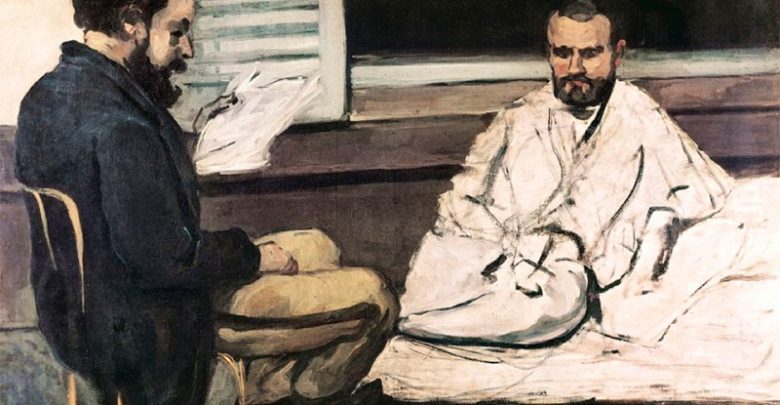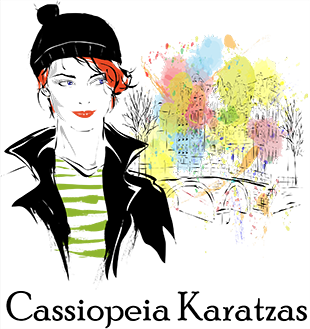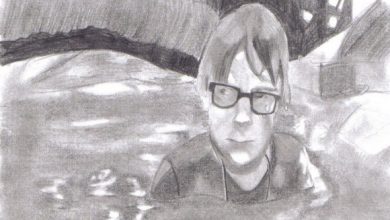
Cézanne’s The Bather depicts an adolescent boy mid-step, capturing a fleeting moment in time. The painting is quite traditional in its subject matter—a male figure in a landscape. But unlike traditional painting, Cézanne’s Bather is pensive, even anxious; his body is decidedly unheroic. Set against a barren, ambiguous backdrop, it is hard to tell where the painting takes place and who the person is. Instead of representing a specific place, the painting seems to capture a sense of ambiguity or uncertainty that is typical of the modern experience. The painting does not tell a story or convey an idea; rather, this composition gave Cézanne an outlet for exploring new ways of painting.
Additionally, Cézanne painted from a photograph of a man standing in a studio in a bathing suit rather than from something that he had seen in real life. The act of painting from a photograph rather than life was a decidedly novel technique at the time.
An image, especially a positive print, recorded by exposing a photosensitive surface to light, especially in a camera.
A work of art made from paint applied to canvas, wood, paper, or another support (noun).
A representation of a human or animal form in a work of art.
The method with which an artist, writer, performer, athlete, or other producer employs technical skills or materials to achieve a finished product or endeavor.
The visual or narrative focus of a work of art.
Modern can mean related to current times, but it can also indicate a relationship to a particular set of ideas that, at the time of their development, were new or even experimental.
The natural landforms of a region; also, an image that has natural scenery as its primary focus.
The arrangement of the individual elements within a work of art so as to form a unified whole; also used to refer to a work of art, music, or literature, or its structure or organization.
Fun Fact!
In 1884, only a year before Cézanne made The Bather, inventor George Eastman developed a method for photographing on film, rather than plates. The technique, which eliminated the need to carry toxic chemicals and cumbersome glass plates, helped make photography available to the masses. Within a few years, it became common practice for painters, including Cézanne, and later Picasso, to include photography as part of their painting process.




